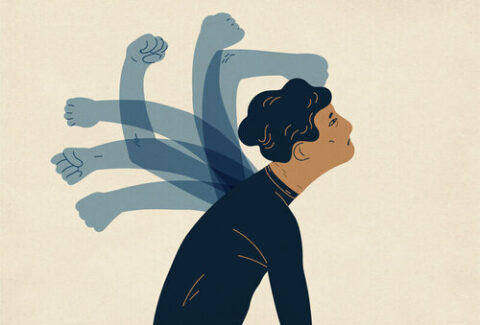The Color Purple And The Patients And Clients We Serve: A Psychiatrist’s Perspective, Part III
The Color Purple And The Patients And Clients We Serve: A Psychiatrist’s Perspective, Part III
“Which one do you think I am, Celie or Nettie?” Maya, my patient, asked me this question during a session. She was alluding to the movie, The Color Purple, which as described in two previous articles, had become an important topic in our sessions; I watched this movie to join with her, and it left a profound impact on me, leading to my decision to write about it.
In the first article of this series, I elaborated on two essential points in the movie that mirror the lives of the patients and clients we all work with in the public sector, child abuse and survival mode. In the second article, I elaborated on two additional essential points, early loss and social injustice. In this third article, I will elaborate on two more essential points from this movie, an epic drama I think every public and community health clinician, advocate, and social work service worker should see.
1. A Moment of Empowerment and
Self-liberation:
Towards the end of the movie, it was evident that Celie was ready to leave Mister and set herself free. This was despite her limited education and her physical, sexual, and emotional trauma, her losses, and despite Mister’s verbal abuse, frequently telling her all she would ever be was a maid. As I mentioned in the first article of this series, Celie’s mode of survival was to “just try to stay alive,” while doing her best to endure all the abuse inflicted upon her by Mister, his children, and anyone else, should they so choose. Nonetheless, Celie reached the point where this mode of survival was no longer serving her purpose. She knew that things could be different. She started to feel empowered, and she slowly mustered the courage to self-liberate.
Feeling empowered is one crucial step we hope our patients and clients will ultimately achieve. It is essential in the promotion of recovery. It is fundamental if they are to heal from trauma, and it is something we ought to work with them on, in our daily practice. In a world where giving a fish seems to take precedence over teaching how to fish, working to help our patients and clients to empower themselves may be transformative and the ripple effect may be astonishing.
2. The Catalyst of Celie’s Empowerment:
“I don’t feel like I am making a difference. I don’t see results. He just comes in and talks, and sometimes I wonder how I am really helping him.” Jenny articulated these words to Rodis, a consultant, referring to her work with her client, Paul. I have supervised several clinicians over the years, and they have, frequently enough, arrived at this same conclusion.
We are working with a population similar to the case of Celie, where the ones responsible for care and defending and protecting our patients and clients are, indeed, perpetrators of violence and abuse. Premature death is often a sad reality. Many never had the opportunity to live a life where they felt safe and cared for, and most of our patients and clients never had that good enough mother or parent, and their object of love, became their object of hate. Their loved object became their hated object. This also means that when they first come to us, they rarely know what to expect; they fear being judged; they feel unsafe; and they fear looming abandonment. When I talk about engagement and mental health assessment or working with special populations, I emphasize the need for establishing and maintaining safety. Once this is done, one of the most powerful gifts you or I can ever give to our patients and clients is our consistent presence, our ability to be there regularly and predictably, and ensuring we explain what we are doing, when we are doing it, and why we are doing it.
Celie’s empowerment was catalyzed by these same principles; she started to feel love through her sister Nettie, who wrote her every single day. Sofia, Mister’s daughter-in-law, who lived in the same house, always offered her a smile and was consistent with compliments and a sincere look, each time she saw her. And Shug, Mister’s mistress, slowly began pointing out her strengths, her beauty, her smile, positioning herself as a protector, and someone Celie could count on. The abuses by Mister, indeed stopped, while Shug was in the house with them, and for the first time, Celie started to feel safe, something I always say is essential for learning, for healing, for feeling empowered, and for self-liberating, as was the case with Celie.
“Which one do you think I am, Celie or Nettie?” Maya, my patient, asked me this question during a session. She was alluding to the movie, The Color Purple, which as described in two previous articles, had become an important topic in our sessions; I watched this movie to join with her, and it left a profound impact on me, leading to my decision to write about it.
Maya’s question was more important than the answer, as I often say; and much insight has come out of it. Which of your patients and clients are Celie? Which are Maya? The answer to this question is obviously less important than the question. What is important, however, is the related question:
What behavior or demeanor
of our patients and clients, if any,
was just part of their survival mode?
With this, we would then start seeing them differently, with a new set of eyes, in a new light. This would then allow us to give them the benefit of the doubt, to hold our judgment, to stay away from hasty conclusions. And they would start trusting us. And healing, empowerment, and self-liberation would then start.
References:
-
Carter R (2015) Prejudice from professionals: mental health and anti-stigma initiative targets services. Community Care.
-
Noblett J, Henderson C (2015) Attitudes and stigma held by healthcare and mental health care professionals towards people with mental illness. Ment Health, pp: 24-27.
-
Aggarwal N (2012) Attitudes of students towards people with mental ill health and impact on learning and wellbeing. The Journal of Research in Special Educational Needs 12: 37-44.
-
Bloch (2016) Interview: Discrimination disempowers people with mental illness. White Swan Foundation.
-
Corker E, Hamilton S, Henderson C, Weeks C, Pinfold, et al. (2013) Experiences of discrimination among people using mental health services in England. Br J Psychiatry 202: s58-s63.
-
Gilburt H, Rose D, Slade M (2008) The importance of relationships in mental health care: A qualitative study of service users’ experiences of psychiatric hospital admission in the UK. BMC Health Services Research BMC 8: 92.








